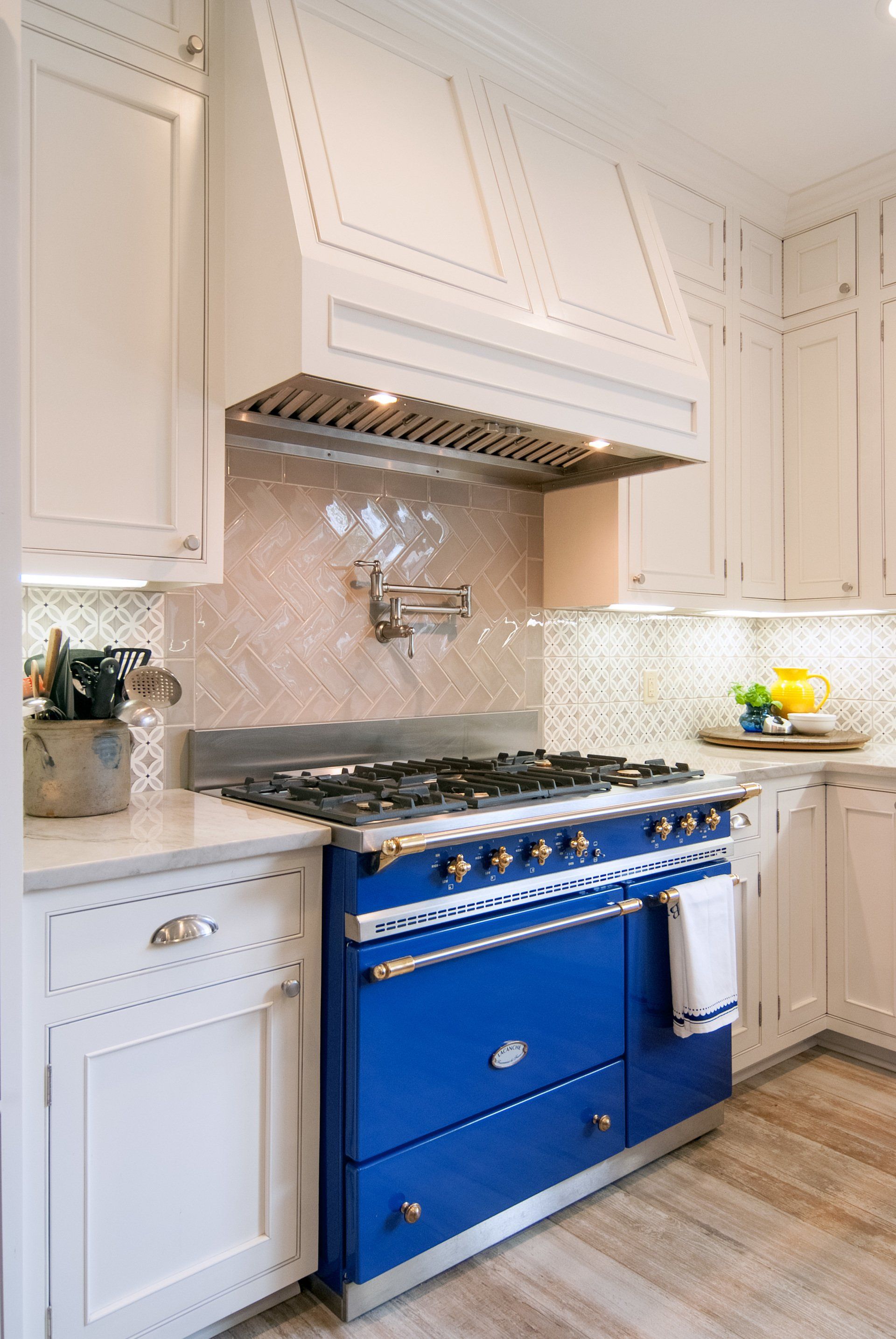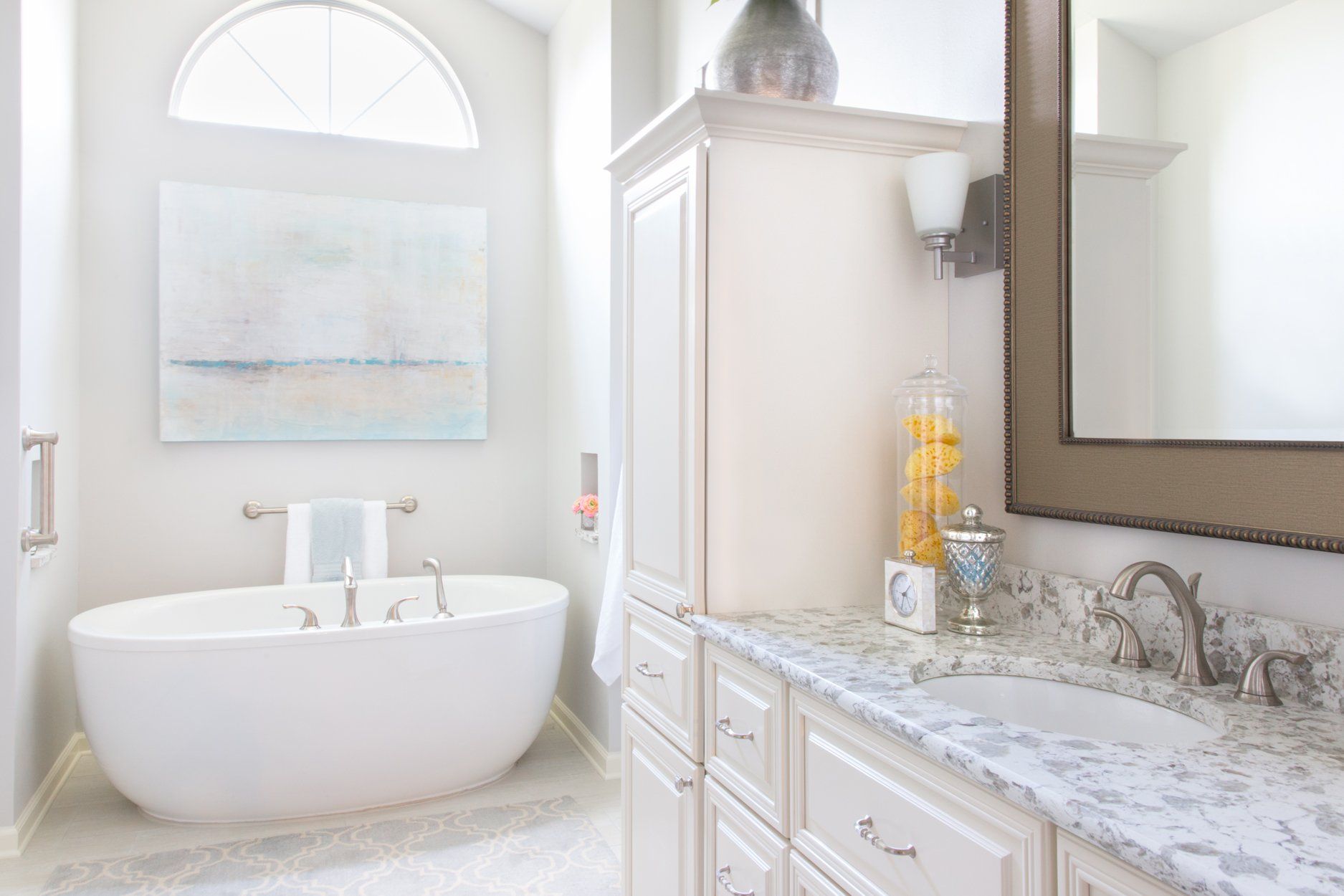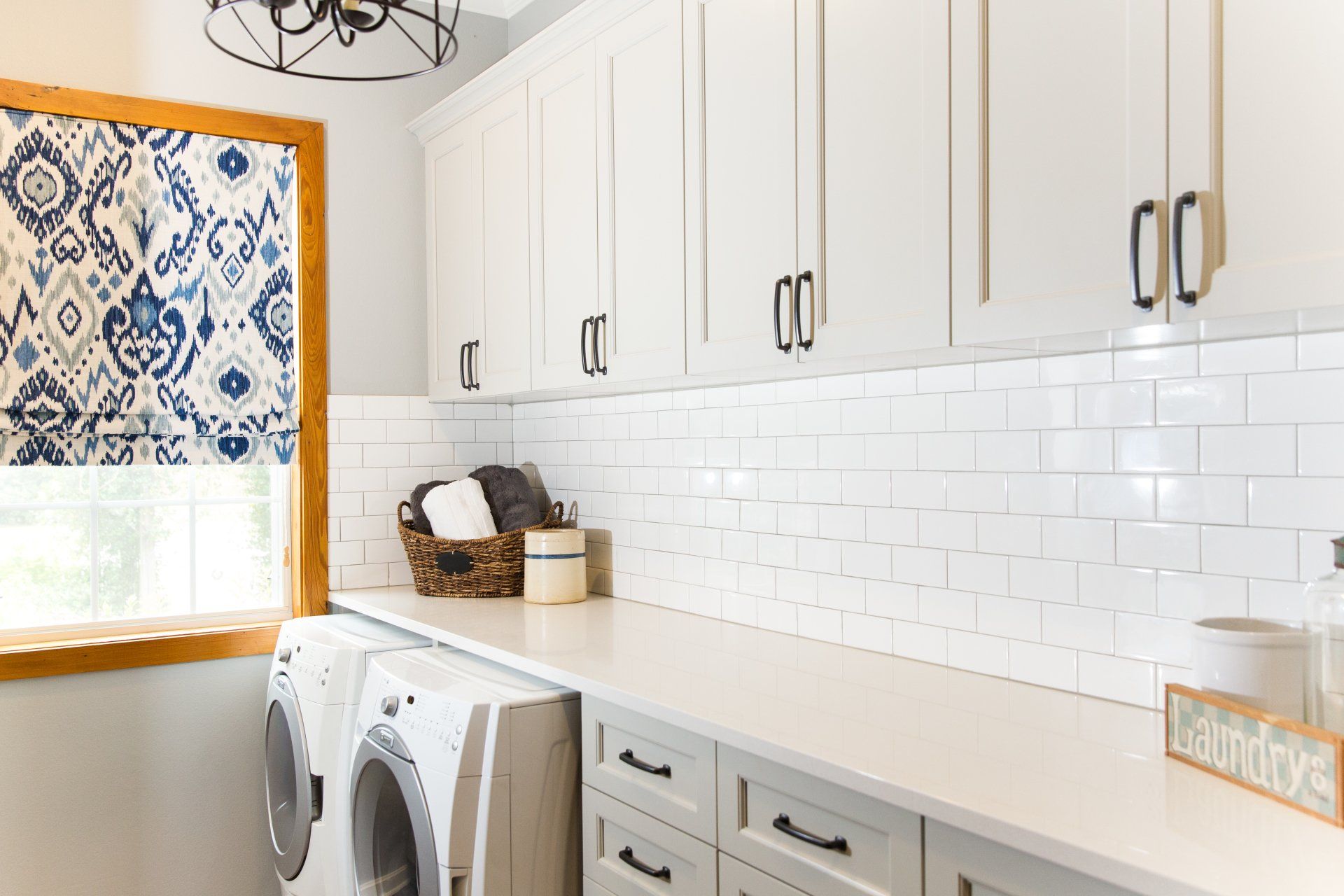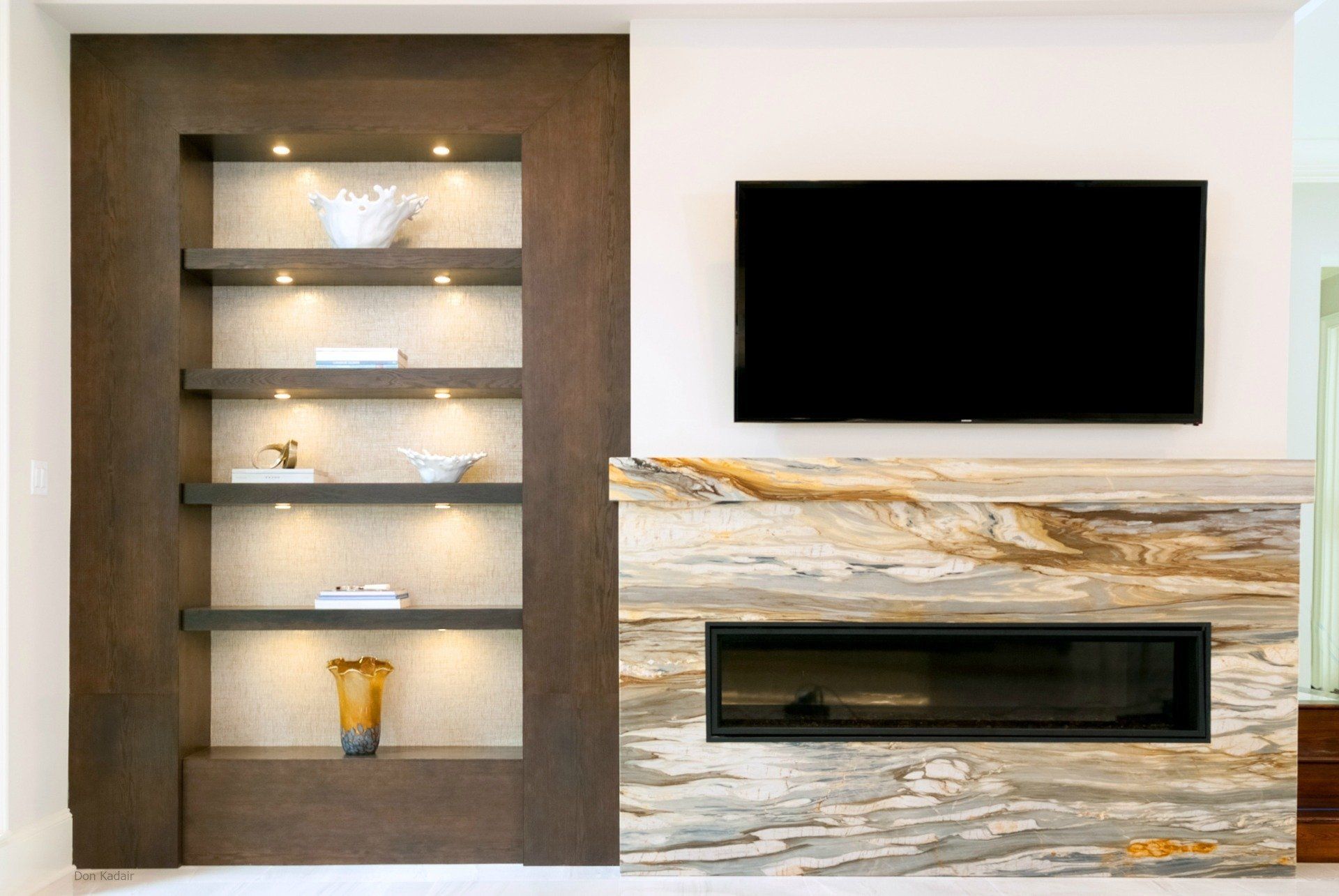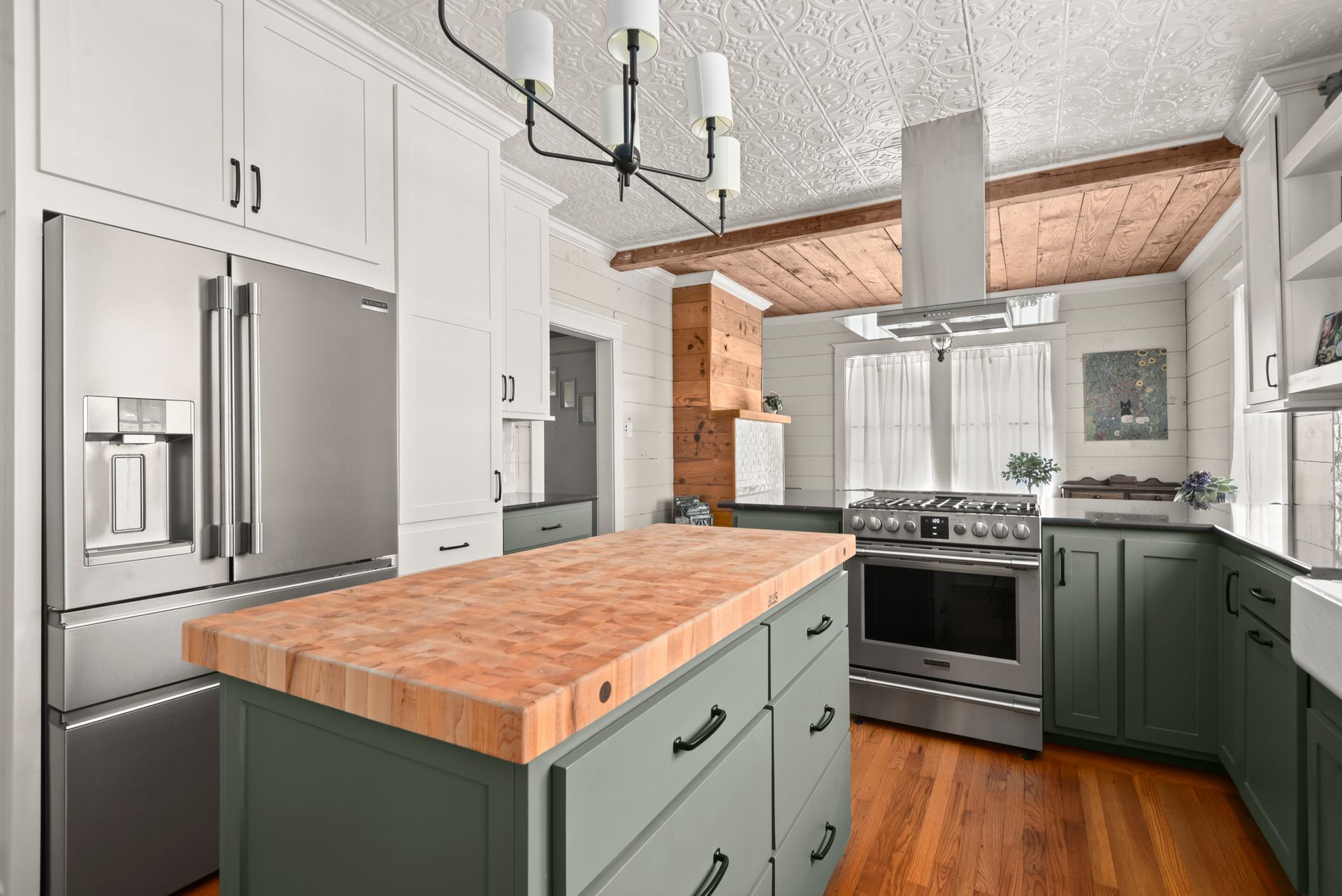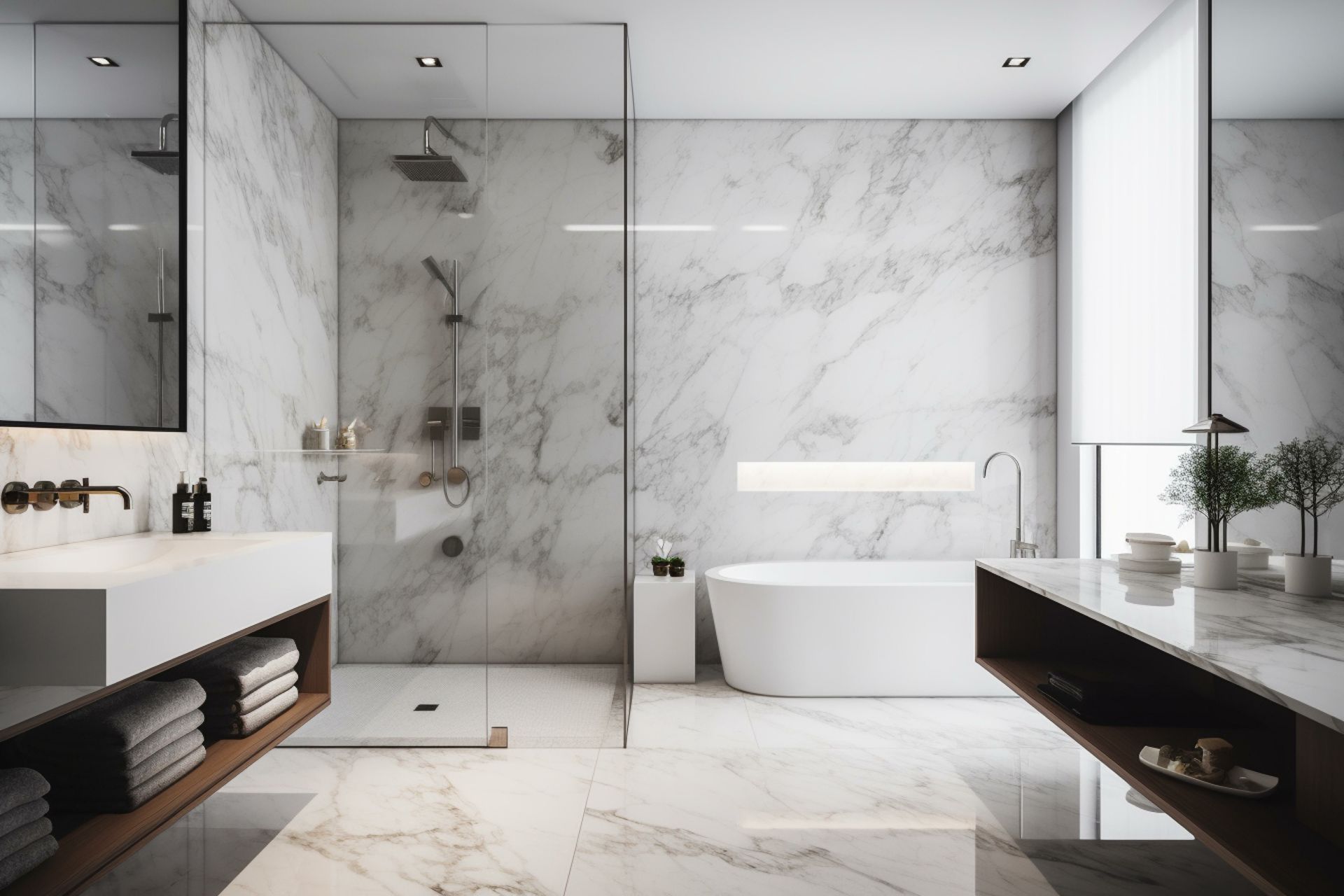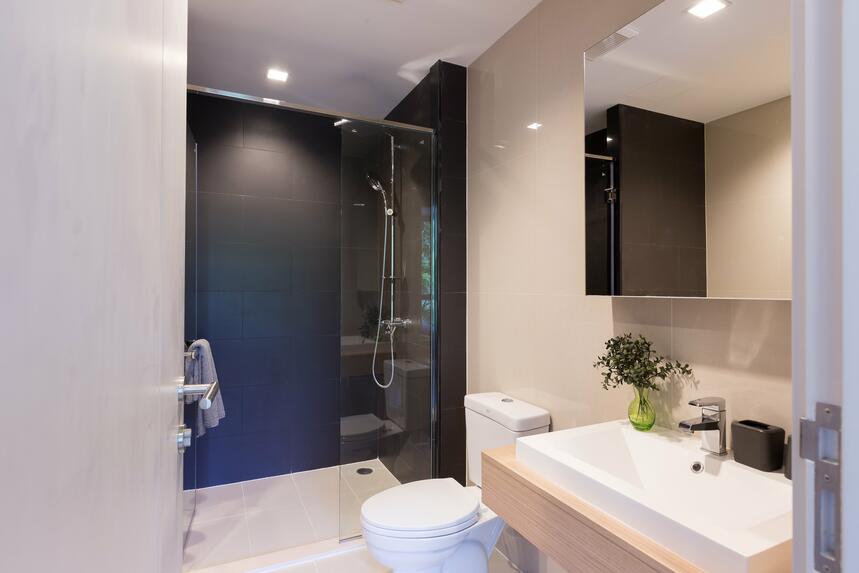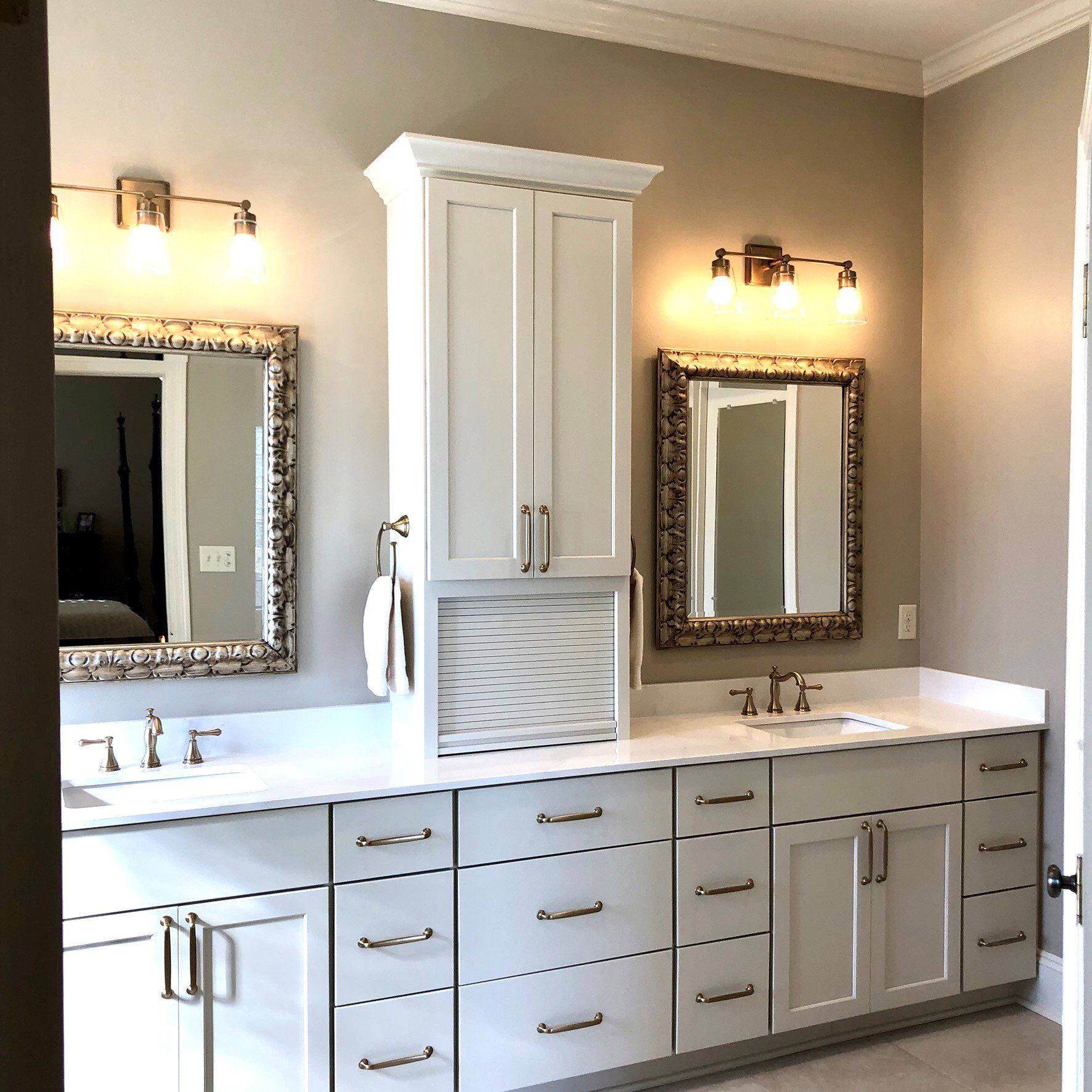Acadian House Design + Renovation Celebrates 45 years of Design + Renovation Excellence!
RE-DESIGN FOR aging in place
More people than ever before are opting to remain in the home as they age. However, as we grow older our needs and other considerations change. To stay safe and comfortable, the space around will need to evolve and adapt to meet your new needs and mitigate the new risks that come with aging. This where Universal Design and aging-in-place renovations come in.
AGING IN PLACE RENOVATIONS FOR Baton Rouge
As more people recognize the emotional, social, and financial benefits of remaining in a familiar environment, they are choosing to age in the comfort of their own homes. However, as we grow older, our needs and priorities shift. To maintain both safety and comfort, our living spaces must evolve to accommodate these changes and reduce potential risks that come with aging. This is where aging in place renovations and universal design play a crucial role, ensuring that your home remains both functional and accessible for years to come.
What is Aging in Place?
Aging in place refers to the ability of older adults to continue living in their own homes safely, independently, and comfortably, regardless of age or physical ability. Rather than relocating to assisted living facilities or nursing homes, aging in place allows individuals to remain in familiar surroundings while adapting their living spaces to accommodate their changing needs. Advances in home design, and assistive technology have made it easier than ever for individuals to maintain their independence while receiving the necessary support to age with dignity.
Benefits of Staying in Your Home as You Age
1. Familiarity and Comfort: Your home is filled with memories and personal touches that contribute to emotional well-being. Remaining in a familiar setting helps reduce anxiety and confusion, particularly for those experiencing cognitive decline.
2. Cost Savings: Assisted living facilities and nursing homes can be expensive, with ongoing costs that quickly add up. Aging in place can be more affordable, especially with thoughtful home modifications.
3. Maintained Social Connections: Moving to a care facility often disrupts established social networks, but remaining at home allows individuals to stay connected with family, friends, and their local community.
4. Personalized Care and Support: Aging in place allows individuals to tailor their care to their unique needs, whether through family support, professional in-home care services, or the integration of smart home technology for added convenience and safety.
5. Better Quality of Life: Staying in one’s home promotes a greater sense of control, dignity, and life satisfaction, contributing to overall well-being.
Planning Ahead for a Safe, Comfortable, and Functional Living Environment
While aging in place offers many advantages, it requires careful planning to ensure that a home remains safe, accessible, and practical as needs change over time. Proactive modifications and adaptations can help prevent accidents, enhance mobility, and create a comfortable living space for years to come.
Key areas to consider when preparing for aging in place:
Home Safety: Reducing fall risks by installing grab bars, adequate lighting, and non-slip flooring.
Accessibility: Making adjustments such as wider doorways, step-free entrances, and user-friendly kitchen and bathroom layouts.
Comfort and Convenience: Implementing smart home technology, voice-activated devices, and easy-to-use appliances to simplify daily tasks.
Future Needs: Anticipating changes in mobility, vision, and overall health to ensure the home continues to meet evolving requirements.
What is Universal Design?
Universal Design is an approach to home design that prioritizes accessibility, safety, and ease of use for everyone, regardless of age or physical ability. It eliminates barriers and allows people to navigate their homes with minimal effort and maximum comfort.
The Role of Universal Design in Aging-in-Place Renovations
Universal Design plays a key role in making homes adaptable and functional for aging in place. Unlike traditional renovations that are designed for immediate needs, Universal Design ensures that a home remains accessible for people of all ages and abilities—not just seniors or those with mobility challenges. By incorporating Universal Design elements into a home, aging in place becomes not only possible but also practical and comfortable, ensuring long-term livability and peace of mind.
Key Universal Design Principles Used in Aging-in-Place Renovations
1. Equitable Use: Design should be useful and accessible to people with diverse abilities, ensuring that everyone, regardless of mobility or physical limitations, can use a space effectively.
2. Flexible Use: A space or product should accommodate a wide range of individual preferences and abilities.
3. Simple and Intuitive Use: Design should be easy to understand, regardless of the user's experience, knowledge, or cognitive ability.
4. Perceptible Information: Essential information should be conveyed clearly, using multiple methods (visual, auditory, or tactile) to ensure comprehension by all users.
5. Tolerance for Error: The design should minimize hazards and reduce the risk of unintended actions.
6. Low Physical Effort: A space should be designed to be usable with minimal strain or exertion.
7. Size and Space for Approach and Use: Sufficient space should be provided for comfortable approach, reach, and use, accommodating people of all sizes, mobility levels, and assistive devices.
Key Considerations for Aging in Place
Aging in place requires careful planning to ensure a home remains safe, accessible, and comfortable as a person’s needs evolve. As mobility, vision, and strength decline with age, certain home features that were once convenient may become obstacles. Proactively addressing potential hazards, making modifications for mobility, and incorporating technology to enhance convenience and security can help prevent accidents and ensure long-term independence.
Safety and Accessibility Considerations
A safe and accessible home is essential for aging in place, but many homes are not designed with these considerations in mind, making it necessary to identify and mitigate risks, including:
Slippery floors and rugs: Increases the risk of falls, especially in bathrooms and kitchens.
Poor lighting: Can make it difficult to navigate hallways, staircases, and entryways safely.
Narrow doorways and hallways: May limit accessibility for individuals using mobility aids like walkers or wheelchairs.
High cabinets and shelves: Can be difficult to reach, increasing the risk of falls or injuries.
Stairs and uneven surfaces: Pose mobility challenges, requiring handrails, stairlifts, or ramps.
Hard-to-use door handles and faucets: Traditional round doorknobs and twist faucets can be difficult for those with arthritis or reduced hand strength.
Crowded Furniture Placement: Restricts easy movement, especially when using mobility aids.
Enhancing Comfort and Livability
Aging in place isn’t just about safety—it’s also about ensuring that the home remains comfortable and practical for daily life. Making thoughtful adjustments can enhance long-term livability. Some modifications for ease of use include:
Single-level living: If possible, relocate essential living spaces (bedroom, bathroom, kitchen, laundry) to the main floor.
Wider doorways and hallways: Accommodate walkers and wheelchairs for easier navigation.
Easy-to-use fixtures: Install rocker light switches, lever-style door handles, and touchless faucets for convenience.
Accessible storage solutions: Lower cabinets, pull-out shelves, and motorized closet rods can reduce strain and improve reachability.
Curbless Shower Designs: Eliminate the need to step in and out of the shower. Also allows easy access for wheelchairs.
Adding Convenience with Smart Technology
Technology can greatly improve safety and convenience for older adults, allowing them to remain independent while having access to assistance when needed. Consider smart technology such as:
Voice-activated assistants (e.g., Alexa, Google Home): Enable hands-free control of lights, temperature, and security systems.
Smart lighting: Motion-sensor lights can illuminate pathways at night to prevent falls.
Video doorbells: Allow residents to see and communicate with visitors without having to get up.
Smart thermostats and climate control: Adjust temperatures automatically based on user preferences, helping to maintain comfort and energy efficiency.
Keyless entry systems: Eliminate the need for traditional keys, allowing entry via PIN codes, fingerprint scans, or smartphone apps.
Working with a CAPS Certified Remodeler
Hiring the right professionals is crucial for ensuring that aging in place renovations meet both safety and functionality requirements. Since these modifications directly impact long-term independence and comfort, working with experienced specialists who understand accessibility and universal design principles is essential.
What is a CAPS Certified Remodeler?
A Certified Aging In Place Specialist (CAPS) is a professional trained by the National Association of Home Builders (NAHB) in designing and modifying homes for aging adults. CAPS professionals include remodelers, contractors, occupational therapists, and interior designers who specialize in accessibility and safety solutions.
What are the benefits of working with a CAPS Certified Remodeler?
Expertise in Universal Design – CAPS professionals understand how to integrate universal design principles to make a home both functional and aesthetically pleasing.
Knowledge of Safety Standards – They are familiar with ADA (Americans with Disabilities Act) guidelines and other industry standards to ensure accessibility.
Customized Solutions – They can tailor modifications to an individual’s specific needs, whether it’s installing grab bars, widening doorways, or creating barrier-free showers.
Long-Term Planning – CAPS professionals design renovations that adapt to changing mobility and healthcare needs over time.
Is Acadian House Design + Renovation a CAPS Certified Remodeler?
Yes! Acadian House is a CAPS Certified Remodeler specializing in transforming homes with beautiful, functional, and accessible designs. Our expertise in aging in place and universal design ensures that your home adapts to your evolving needs while maintaining your home's value and aesthetics. Let us help you create a safe, comfortable, and elegant living space where you can age with confidence and independence.
Smart Aging In Place K
Butcher block countertops are crafted from strips of wood, typically hardwoods like maple, oak, or walnut, bonded together to create a sturdy, solid surface. They bring a sense of natural warmth and timeless charm to kitchens and bathrooms, making them a favorite for rustic, farmhouse, and transitional designs.
Benefits of Butcher Block Countertops
1. Warm Aesthetic:
The natural wood grain adds a cozy, inviting feel to any space, enhancing its character.
2. Repairable Surface:
Minor scratches, dents, or stains can be sanded out and refinished, extending the countertop's lifespan.
3. Eco-Friendly Material:
Often made from renewable resources and sustainably harvested wood, making them an environmentally conscious choice.
What are the Disadvantages of Butcher Block Countertops?
1. Maintenance-Intensive:
Requires regular oiling to prevent drying, cracking, and water damage.
2. Prone to Damage:
Wood is softer than stone, making it more susceptible to scratches, dents, and stains.
3. Not Heat-Resistant:
Direct exposure to hot pots or pans can leave burn marks or damage the surface.
How do you Maintain Butcher Block Countertops?
Caring for butcher block countertops requires regular attention to maintain their beauty and functionality. It’s important to condition the surface with mineral oil or a specialized wood sealer every 1-3 months to keep it moisturized and prevent cracking. For cleaning, use a damp cloth and mild soap—avoid soaking the wood or using harsh chemicals, which can damage the finish. To prevent moisture exposure, promptly wipe up spills and avoid placing the butcher block near sinks without proper sealing. Periodically, the surface may need to be sanded down and re-oiled or resealed every few years to keep the wood looking fresh and vibrant.
Design Options for Butcher Block
Butcher block countertops offer a variety of design choices to fit different styles and preferences:
Wood Species
Maple: Light, neutral look
Walnut: Rich, dark tones
Cherry: Warm, reddish hue
Finish Styles:
Edge Grain: Strips of wood are laid flat, highlighting the natural grain pattern for a classic look.
End Grain: Small wood blocks arranged vertically create a checkerboard pattern, offering greater durability and visual interest.
Live Edge: Retains the natural edge of the wood for a rustic, artisanal appearance.
Staining Options
Butcher block can be stained to match or complement the surrounding cabinetry and décor.
Smart Aging In Place K
Butcher block countertops are crafted from strips of wood, typically hardwoods like maple, oak, or walnut, bonded together to create a sturdy, solid surface. They bring a sense of natural warmth and timeless charm to kitchens and bathrooms, making them a favorite for rustic, farmhouse, and transitional designs.
Benefits of Butcher Block Countertops
1. Warm Aesthetic:
The natural wood grain adds a cozy, inviting feel to any space, enhancing its character.
2. Repairable Surface:
Minor scratches, dents, or stains can be sanded out and refinished, extending the countertop's lifespan.
3. Eco-Friendly Material:
Often made from renewable resources and sustainably harvested wood, making them an environmentally conscious choice.
What are the Disadvantages of Butcher Block Countertops?
1. Maintenance-Intensive:
Requires regular oiling to prevent drying, cracking, and water damage.
2. Prone to Damage:
Wood is softer than stone, making it more susceptible to scratches, dents, and stains.
3. Not Heat-Resistant:
Direct exposure to hot pots or pans can leave burn marks or damage the surface.
How do you Maintain Butcher Block Countertops?
Caring for butcher block countertops requires regular attention to maintain their beauty and functionality. It’s important to condition the surface with mineral oil or a specialized wood sealer every 1-3 months to keep it moisturized and prevent cracking. For cleaning, use a damp cloth and mild soap—avoid soaking the wood or using harsh chemicals, which can damage the finish. To prevent moisture exposure, promptly wipe up spills and avoid placing the butcher block near sinks without proper sealing. Periodically, the surface may need to be sanded down and re-oiled or resealed every few years to keep the wood looking fresh and vibrant.
Design Options for Butcher Block
Butcher block countertops offer a variety of design choices to fit different styles and preferences:
Wood Species
Maple: Light, neutral look
Walnut: Rich, dark tones
Cherry: Warm, reddish hue
Finish Styles:
Edge Grain: Strips of wood are laid flat, highlighting the natural grain pattern for a classic look.
End Grain: Small wood blocks arranged vertically create a checkerboard pattern, offering greater durability and visual interest.
Live Edge: Retains the natural edge of the wood for a rustic, artisanal appearance.
Staining Options
Butcher block can be stained to match or complement the surrounding cabinetry and décor.
